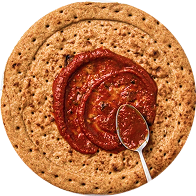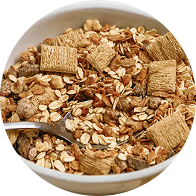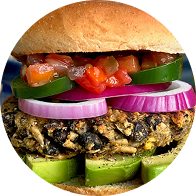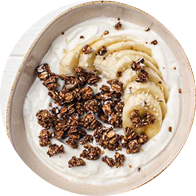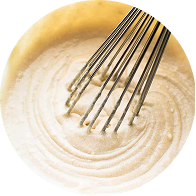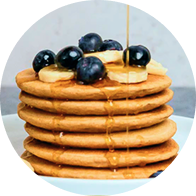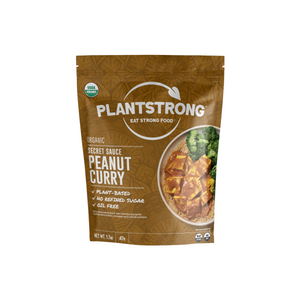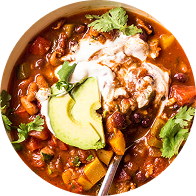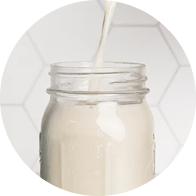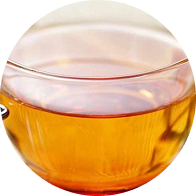Whole-Food Plant-Based Diet: All the Essentials You Need to Know
According to a McKinsey study, about four out of five American consumers consider health and wellness a top priority. It's no wonder more and more people are opting for alternative diets, such as whole-food, plant-based diets.
Are you thinking about ditching your current eating plan for a whole-food, plant-based (WFPB) lifestyle, but aren't sure if it's right for you? We've got you covered. In this guide, we'll explore all the essentials you need to know about the WFPB lifestyle.
What Is a Whole-Food Plant-Based (WFPB) Lifestyle?
What exactly is a whole-food plant-based (WFPB) lifestyle? Let's break it down. Whole foods are unprocessed or minimally processed foods. Plant-based foods are derived from plants like legumes, nuts, fruits, and vegetables.
Therefore, a WFPB diet is simply one that focuses on foods derived primarily from plants with minimal processing. Here are the basic principles of a whole-food, plant-based diet:
- Prioritizes whole foods, such as whole grains like brown rice and oats
- Limits or eliminates animal products
- Excludes highly refined foods, like white rice, bleached flour, and processed oils
Benefits of a Whole-Food Plant-Based Lifestyle
A whole-food, plant-based lifestyle offers many benefits. Here are some science-backed benefits of following a WFPB diet:
Easy Weight Management
Looking to get your weight under control? Then, a whole-food, plant-based diet can do wonders for your waistline. According to a 2020 review that examined 19 other studies, people who followed a plant-based diet shed significantly more weight than those following other diets.
So, why are whole-food, plant-based diets effective for weight management? Well, many WFPB foods like brown rice, oatmeal, and legumes are high in fiber, low in saturated fats, and satiating.
In contrast, many animal-based foods like dairy products and meat are high in calories and low in fiber, which helps us feel satisfied. That's why, on a WFPB diet, you can serve relatively large portions without worrying about portion control or calorie counting.
Reduced Disease Risk
A whole-food, plant-based lifestyle isn't just good for your waistline. It's also good for your health. Multiple studies have linked a WFPB diet to a lower risk of various diseases, including heart disease, certain cancers, and type 2 diabetes.
Reduced Inflammation
Many heavily processed foods cause inflammation. WFPB SOS-Free diets (whole food, plant-based, free from sugar, oil, or salt) are less likely to cause inflammation because they contain no unhealthy oil, salt, or added sugar.
Environmentally-Friendly
A whole-food, plant-based diet is good for your health and the planet. According to a 2016 study, adopting a whole-food, plant-based diet can reduce greenhouse gas (GHC) emissions by up to 80%, reduce water use by 50%, and promote efficient land use.
Cost-Savings
Besides the health and environmental benefits of following a WFPB lifestyle, adhering to one can also lower your food expenses. According to an Oxford University study, adopting a plant-based diet could slash your food costs by nearly 30%.
Common Whole-Food Plant-Based Diet Foods
If you're planning to start preparing whole-food, plant-based meals, here are common foods you'll want to add to your grocery basket:
Foods to Avoid on a Whole-Food Plant-Based Diet
Here are some foods you should avoid if you want to follow a strict WFPB diet:
Besides these foods, there are also some foods you should minimize when following a WFPB diet. Some of these foods include:
- Dairy products like cheese, yogurt, and butter
- Eggs
- Beef
- Pork
- Lamb
- Poultry
- Fish
How to Transition to a Whole-Food Plant-Based Diet
Making sudden lifestyle changes isn't a simple task. If you want to shift to a whole-food, plant-based diet, here are simple tips that can make the transition easier:
- Substitute dairy milk with unsweetened plant-based milk like almond, oat, or soy milk
- Replace animal-based proteins like beef, chicken, and lamb with plant proteins like tofu, tempeh, and legumes
- Substitute white bread, rice, and pasta with whole-grain options
- Substitute packaged junk foods with healthy whole-food plant-based snacks like nuts, smoothies, and fruits
- Make vegetables the centerpiece of your plate
- Gradually cut down on the number of meals you eat containing meat
Easy Meal Plans to Help You Get Started With a WFPB Diet
Following a WFPB diet doesn't have to mean eating bland food. Here are some nutritious and tasty whole-food plant-based meal plans to help you transition to a WFPB diet:
Find Healthy and Nutritious Whole-Grain Plant-Based Foods
A whole-food, plant-based diet offers numerous benefits. It can help you to manage your weight better and reduce your risk of contracting various diseases. And best of all? Adhering to a WFPB diet can cut your grocery costs significantly and lower your carbon footprint. A win-win for you and the planet.
Ready to indulge in tasty foods and enjoy the benefits of adhering to a WFPB diet? Shop our store for a wide variety of healthy and nutritious whole-grain plant-based foods.
FAQs
Is a Whole-Food, Plant-Based Lifestyle Right for You?
A whole-food, plant-based lifestyle can offer you many benefits. Many people who have switched to the diet have shed excess weight and enjoy active lifestyles.
That said, doctors and health experts often recommend WFPB diets for people with weight management issues, high blood pressure, and chronic conditions. Consult your doctor or dietician to determine whether you should switch to a WFPB diet.
Is a Whole-Food Plant-Based Diet Similar to a Vegetarian or Vegan Diet?
Vegetarians exclude all meat and poultry from their diet, but some consume eggs, dairy, and fish. On the other hand, people who follow a vegan diet don't consume any animal-based products.
However, unlike people who follow vegetarian and vegan diets, followers of the WFPB lifestyle don't consume heavily processed foods. Oreos and potato chips are vegan but they are far from being considered a "whole" food.
Can I Eat Rice and Bread on a WFPB Diet?
You can eat rice and bread on a WFPB diet. However, opt for whole-grain rice and bread. Also, be mindful of product labels. Generally, foods labeled as made with whole grain or multi-grain aren't entirely whole grain. Whole grain foods are usually labeled 100% whole grain. Additionally, they have the word whole, cracked, or stone ground listed first on their ingredient list.
Can I Order Take Out or Eat Out on a WFPB Diet?
Following a WFPB diet doesn't have to confine you to preparing home-cooked meals. You can also order takeout or eat out. Many restaurants accommodate WFPB diets. However, before ordering takeout or eating out at a restaurant, check out its menu or call in advance to find out whether it caters to WFPB diets.

